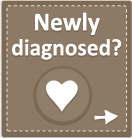
What is SMA?
Spinal Muscular Atrophy (SMA) is genetic disorder causing severe muscle weakness. The vast majority of children with SMA, like Getty, are born with weaker muscles. The lack of muscle strength affects the ability to move, cough, swallow, and even breathe. The weakness gets worse over time, usually leading to breathing problems which can be life threatening.
There is no cure or treatment for SMA. The lifespan with SMA is seldom longer than 2 years.
- SMA is the #1 genetic killer of young children.
- SMA occurs in nearly 1 in 11,000 births.
- 1 in 50 people, or nearly 10 million Americans, UNKNOWINGLY carries the gene responsible for SMA. Few have any known family history.
- SMA does not discriminate based on race, ethnicity, or gender.
- While there currently is no cure, 2017 brought incredible news of a viable treatment. Spinraza, created by Biogen is currently on the market as the first treatment for SMA.
- The American College of Medical Genetics recommends that SMA carrier testing be made available to ALL couples planning a family, regardless of ethnicity or family history.
- SMA does not affect the mind.
What are the different types of SMA?
People with SMA are commonly identified by 4 or 5 “types” of SMA. These types are based upon strength. Each “type” is not a separate disease, but serves as a convenient shorthand when discussing the severity of SMA. Abilities described below may be lost over time because SMA is degenerative. SMA types are measured by the maximum ability ever attained.
Type 1: This is the most common and severe type of SMA. People with Type 1 cannot sit up without support and are sometimes called “non-sitters.” The average life expectancy with Type 1 is seldom over 2 years. 60% of SMA births are Type 1.
Type 2: People with Type 2 can or have been able to sit up but not stand, and they are sometimes called “sitters.” The life expectancy with Type 2 is typically over 2 years. 70% of Type 2 patients are alive at age 25. 27% of SMA births are Type 2.
Type 3: This is a milder form of adult-onset SMA. People with Type 3 are able to stand and walk, but lose that ability over time. They are sometimes referred to as “walkers.” The life expectancy with Type 3 is often not affected. 12% of SMA births are Type 3 or 4.
Type 4: This is the mildest type and is typically adult-onset SMA. People with type 4 can walk, and that ability is not lost. The life expectancy with Type 4 is often not affected. 12% of SMA births are Type 3 or 4.
Type 0: This is an informally recognized type. Some refer to Type 0 as a more severe form of Type 1. The age of onset for Type 0 is prenatal and the average life expectancy is less than 6 months.
To learn more about SMA, join the fight, find a cure, or if you are newly diagnosed, please visit our FAQ’s and Newly Diagnosed pages.










